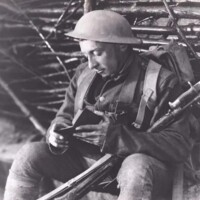Browse Exhibits (6 total)
Grace Covell Hall

This project features Grace Covell Hall, a residence and dining hall located on 720 Presidents Drive on the Stockton campus of University of the Pacific. Funded by Grace Covell, a notable member of Pacific's Board of Trustees, the women's residence hall was renamed and rebuilt in her name due to the students' discontent on the building's lack of individuality. She was also responsible for underwriting a large portion of the $1,575,000 structure’s cost, which was usually managed by the Home Finance Agency of the federal government.
Pacific Alumni Association, "Pacific Review March 1960 (Bulletin of the College of the Pacific)" (1960). Pacific Magazine and Pacific Review. 165.
https://scholarlycommons.pacific.edu/cgi/viewcontent.cgi?article=1164&context=pacific-review (first mention of Grace Covell)
University of the Pacific, "Pacific Weekly, October 7, 1960" (1960). All Issues - Student Newspaper, The Pacifican, Pacific Weekly. 1149.
https://scholarlycommons.pacific.edu/cgi/viewcontent.cgi?article=2146&context=pacifican (first hand reviews of the newly renovated Grace Covell Hall)
Monuments and Memorials: University of the Pacific

The goal of the project is to help alumni and community members connect to the Stockton University of the Pacific campus by revealing the stories behind monuments and memorials.
The University of the Pacific will commemorate 100 years in Stockton, California in 2024. Familiar narratives will no doubt circulate and help fuel fundraising efforts. While these stories will heighten a sense of belonging for many alumni, students, faculty and staff, those who do not see their stories centered may feel alienated and erased. A digital inventory of monuments and memorials on campus with narratives and primary sources will tell the less well-known stories about the campus from the perspective of students, staff, and faculty. I will begin to contextualize a few sites such as the Jacoby Center named after a prominent mid-20th-century professor of sociology who became a War Relocation Authority employee in the 1940s, Anderson Hall where numerous student clubs met in the mid-20th century; and Burns Tower, a central landmark on campus which students stormed in the 1960s to demand a Black student union. During this semester, a website that offers content and interpretation, including primary sources that document these stories and biographies of important people, along the model of Histories of the National Mall [mallhistory.org] will take shape. Over time, I envision a participatory website where students, alumni, faculty, and staff can contribute their research over time.
Sally Miller

This is the story of Professor Sally Miller, the first tenured woman in the social sciences at the College of the Pacific, and her impact on students, colleagues, and the community.
STEM at UoP: Few & Far In-Between

This exhibit is a investigation into the strangely small relative class sizes and enrollment figure of STEM related material hosted at University of the Pacific.
Student Involvement In WWI At UOP

World War One, being one of the most destructive wars in the modern era, impacted people from all areas of the United States and all walks of life. Pacific was no different in this regard, with numerous students being enlisted in the military and others, men and women alike, still being involved in the war effort in other ways. As far as I know, no memorials exist on Pacific's campus to commemorate any involvement in the war even though over one hundred students participated in the war in one form or another.
We Also Built Stockton: Experiences of Immigrant Women in Stockton, California

This exhibit provides access to a digital collection of oral history interviews of immigrant women in Stockton with teaching tools. It is designed for undergraduate students in an introduction to U.S. women's history course. It will also be useful for students wishing to study oral history for California history and immigration history courses.
In the early 1980s, Sally Miller, Professor of History at University of the Pacific, and her students interviewed sixty immigrant women from at least twenty-five different nationality groups in Stockton. Most came to the United States between 1920 and 1960, during the period of strict immigration restriction framed by the 1920s quota bills. A fraction also immigrated under the benefits of the 1965 Immigration Act.
These interviews help us think about crucial immigration and women's history questions:
- What kinds of work did women do? What factors went into their job or career choices?
- In what ways did gender frame women's immigration experiences?
- How did immigrant experiences differ over the 20th century?
These oral histories are significant. They center women and immigrants, groups celebrated in theory but whose specific stories appear only in brief outlines in most history books. These oral histories and the lessons included here support what the National Women's History Alliance calls for: "a truly balanced and inclusive history [that] recognizes how important women have always been in American society." They also help us empathize with the current conditions that immigrants and women face.